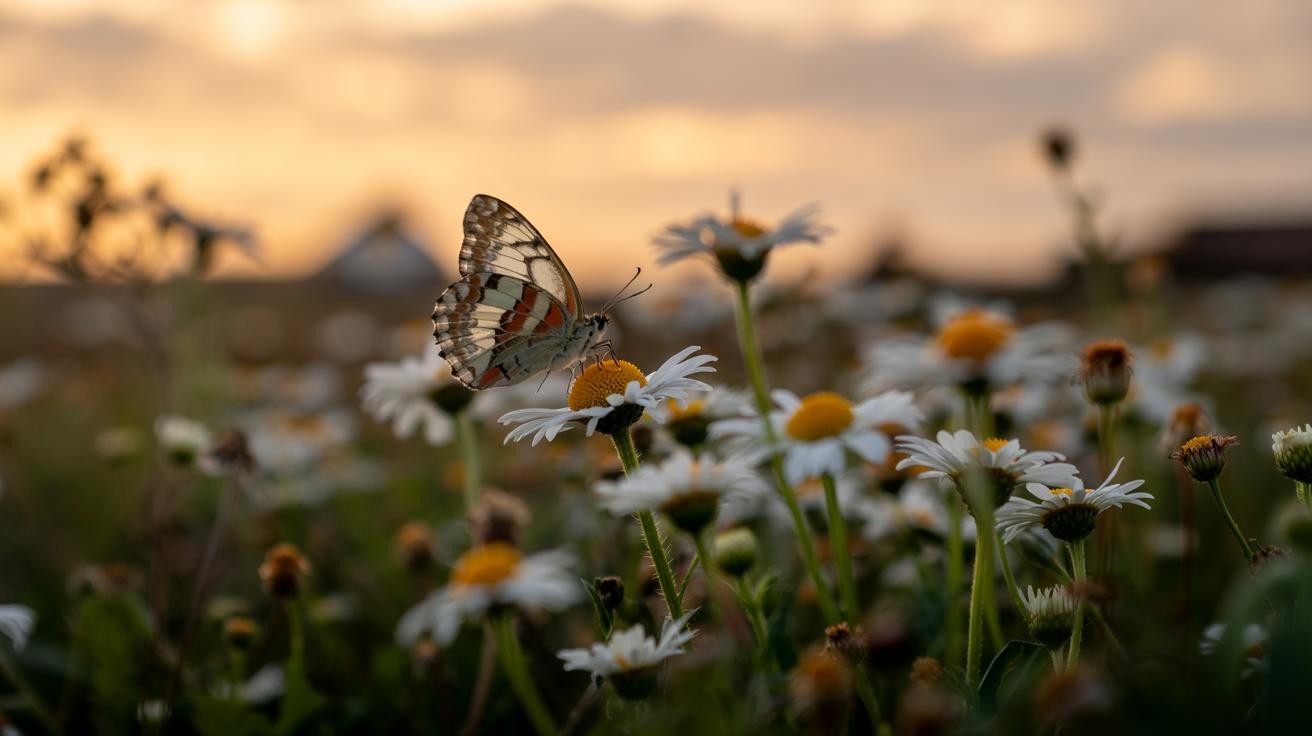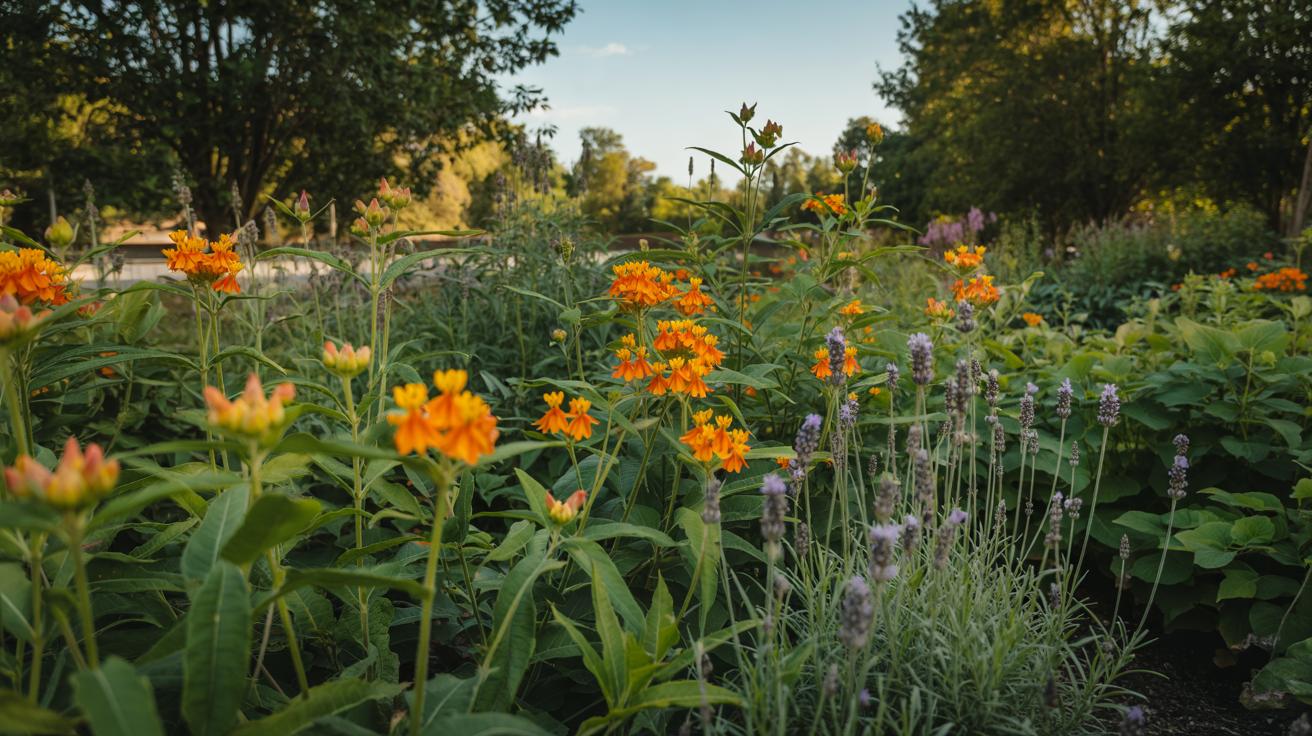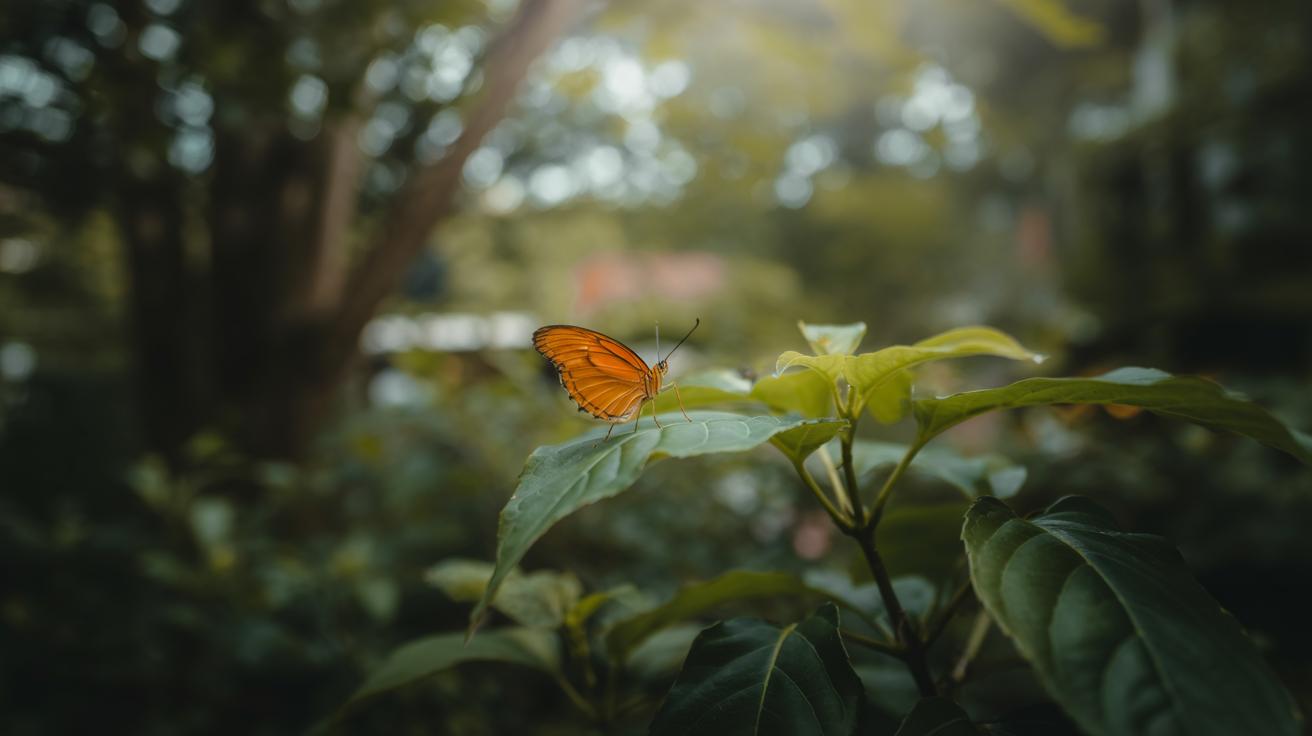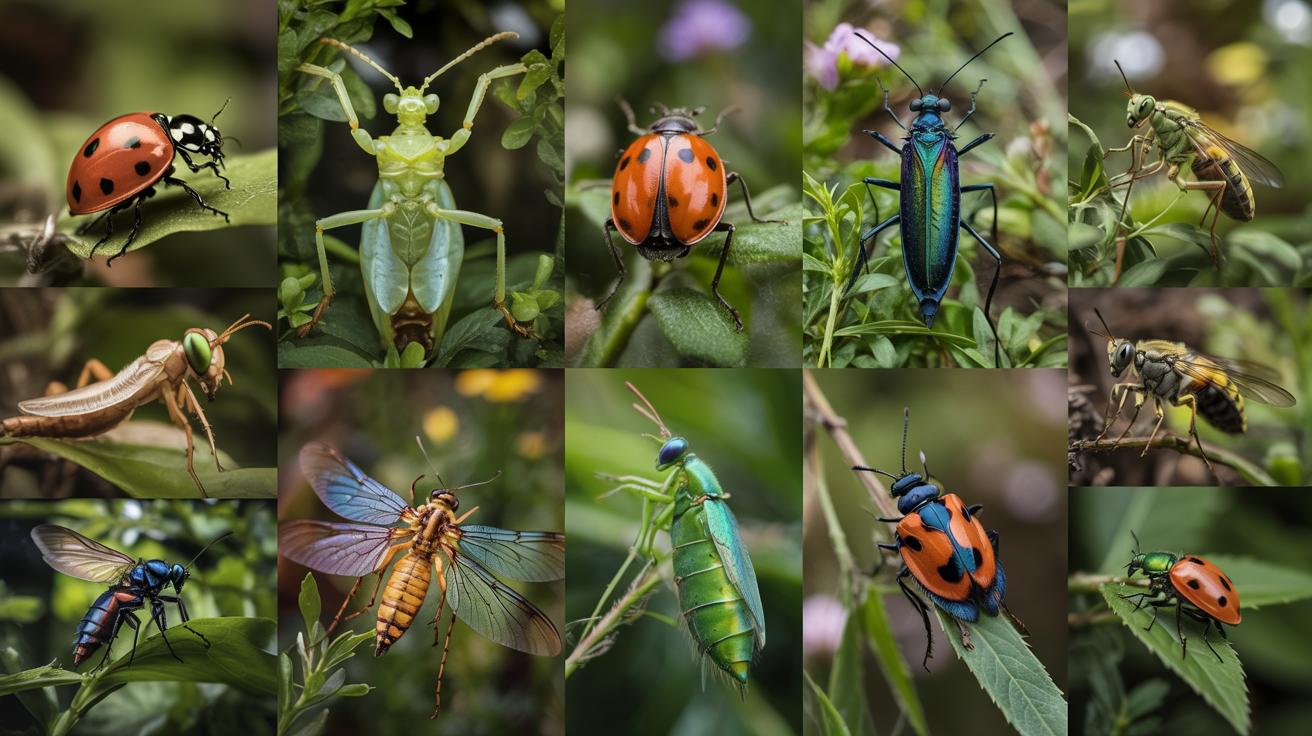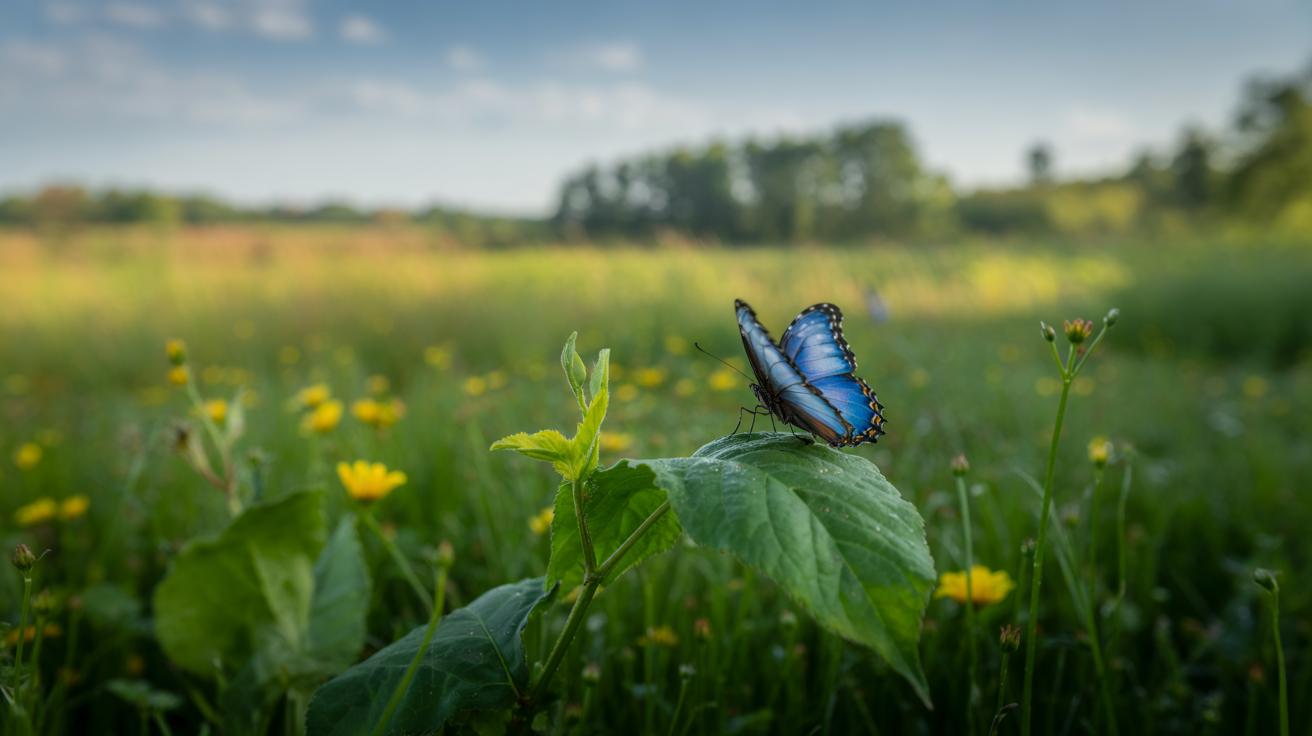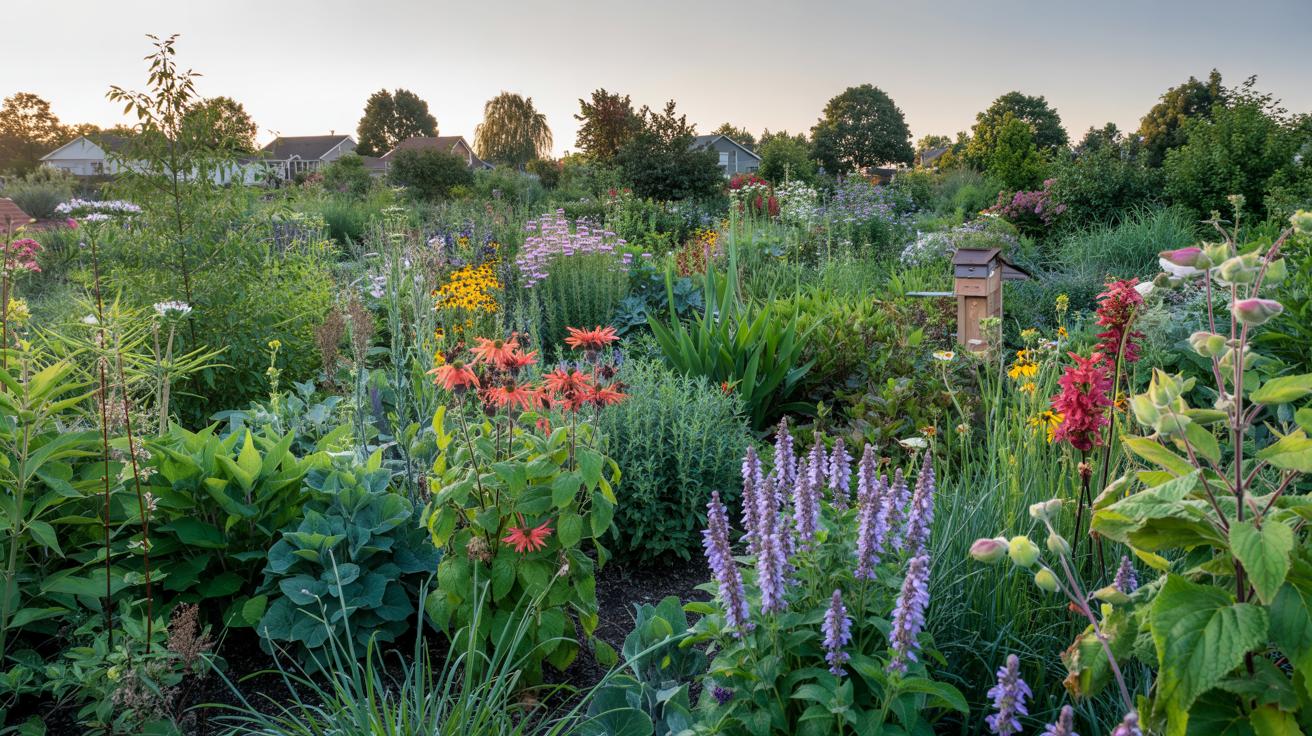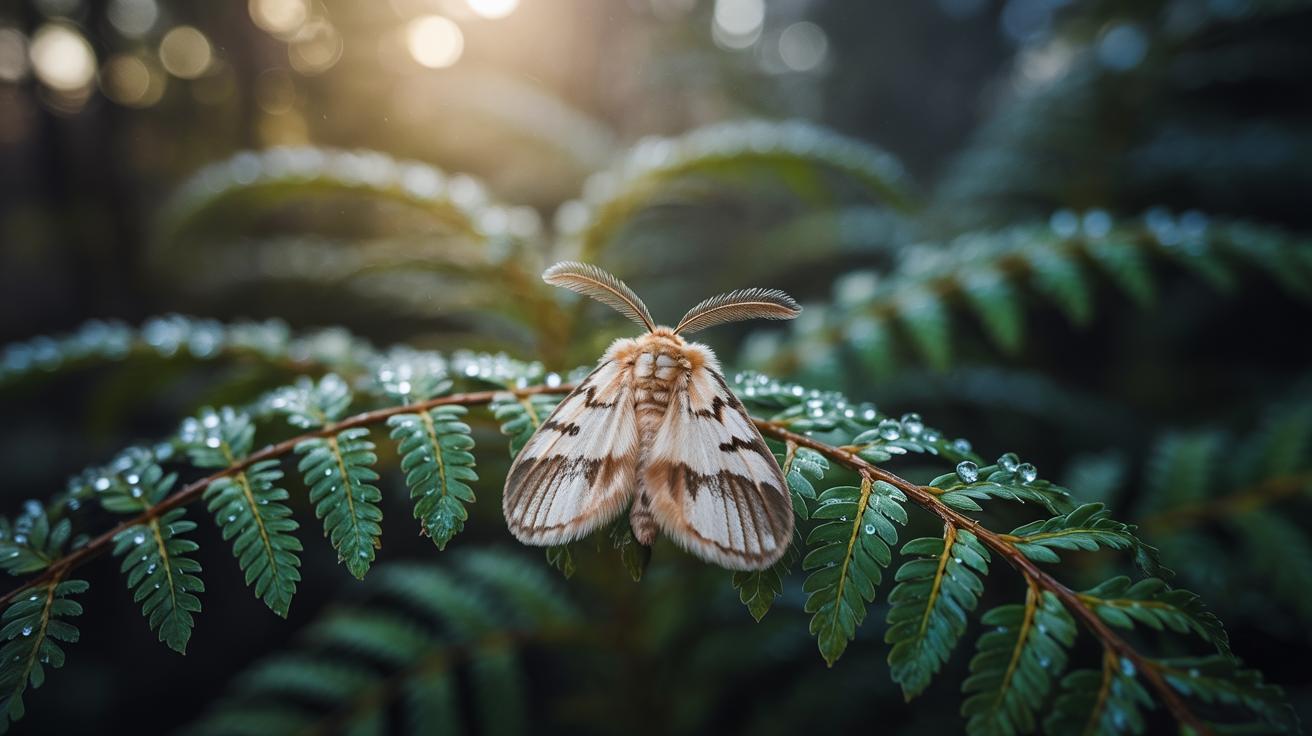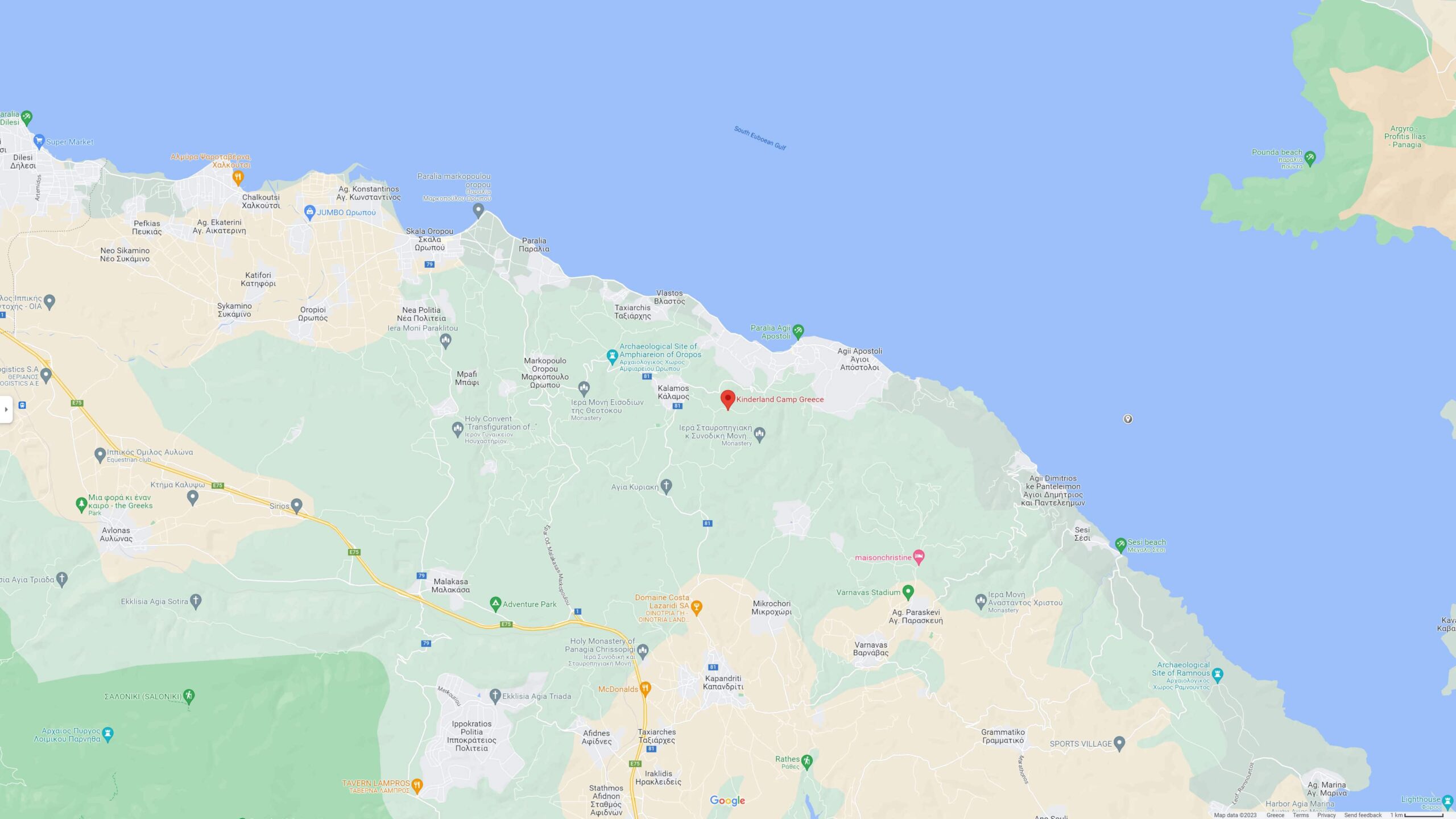Introduction
Butterflies captivate with their delicate beauty and graceful flight. These winged insects belong to the superfamily Papilionoidea, containing roughly 20,000 known species worldwide. Each species displays unique wing patterns and colors, often serving purposes like camouflage or warning predators. Butterflies undergo complete metamorphosis, transforming from egg to caterpillar, then pupa, and finally to the winged adult stage we admire.
Your exploration of butterflies will reveal remarkable diversity. From the dazzling blue wings of the Morpho butterflies to the transparent beauty of the glasswing, each offers special features. Some, such as the Queen Alexandra’s birdwing, hold records for size, while others like the zebra longwing play important ecological roles. This article highlights ten beautiful butterflies from various regions, sharing what makes each one stand out.
Understanding Butterfly Anatomy and Life Cycle

Every butterfly shares common features that shape its appearance and behavior. Their wings consist of thin membranes covered by tiny scales. These scales give butterflies their vibrant colors and patterns. You might wonder how such delicate wings can carry a butterfly for miles. The unique structure of veins in the wings provides strength while keeping them light for flight.
Butterflies go through four key life stages: egg, caterpillar, pupa, and adult. Each stage plays a role in their growth and survival. The journey begins when a butterfly lays eggs on a host plant. Those eggs hatch into caterpillars, which feed and grow rapidly. Then, the caterpillar forms a chrysalis or pupa, entering a resting phase where transformation occurs. Finally, the adult butterfly emerges with wings ready to take flight.
Why does this metamorphosis matter? Without this process, butterflies couldn’t change from a crawling larva into a flying insect. Metamorphosis allows them to adapt, reproduce, and thrive in various environments. Watching this transformation shows how nature masters survival through change.
Butterfly Wings and Colors
Butterfly wings are covered with thousands of tiny scales that create their colors and patterns. These scales work like tiles, overlapping closely to form beautiful designs. Some colors come from pigments that absorb light and reflect specific shades. Others come from structural coloration, where microscopic shapes on scales scatter light to produce bright blues or iridescence.
Color and patterns serve many purposes. They help butterflies hide from predators, attract mates, or warn enemies with bright, dangerous colors. For example, the Monarch butterfly’s vivid orange signals it tastes bad to birds. Can you imagine how different a butterfly would seem without its iconic wing patterns?
Stages of Butterfly Metamorphosis
The life of a butterfly unfolds in four clear stages. It begins as a tiny egg, often laid on leaves where food is plentiful. After a few days, a caterpillar hatches. This larval stage focuses on eating and growing quickly, shedding skin multiple times as it expands.
Next comes the pupa or chrysalis stage. Inside this hard casing, the caterpillar’s body breaks down and rebuilds into an adult butterfly. This quiet transformation may last weeks depending on species and conditions. The final stage is the adult butterfly, which emerges with fully formed wings and ready to reproduce.
This cycle is essential. Each stage prepares the butterfly to survive challenges or reproduce. How might your view of growth change if you thought about development as a transformation instead of just steady progress? Butterflies remind us that great change often happens in distinct phases.
The Blue Morpho Butterflys Stunning Display

The Blue Morpho butterfly stands out with its brilliant electric blue wings that shine under sunlight. These butterflies live mainly in the rainforests of Central and South America. Their huge wingspan can reach up to six inches, making them easy to spot when they flutter through the dense forest.
Blue Morphos use their bright blue wings not only to attract mates but also to confuse predators. When they close their wings, the brown undersides provide camouflage against tree bark. You might wonder how such beauty affects their survival in the wild.
These butterflies are popular in ecotourism. People travel from around the world to see them in their natural habitat. This interest helps raise awareness about rainforest conservation. But the Blue Morpho also faces dangers like habitat destruction and over-collection by humans seeking to own a piece of their beauty.
Coloration and Habitat
The Blue Morpho’s blue color comes from tiny scales on its wings that reflect light, a phenomenon called structural coloration. Unlike pigments, this effect creates a shimmering blue that changes with viewing angles. It’s not paint but the way light bounces off the wings.
These butterflies live in tropical rainforests, which offer a humid, warm environment rich with plants. The dense canopy provides shelter and food sources like fermenting fruit. You can often find Blue Morphos flying low near rivers or through thick green foliage where they blend in when their wings close.
Conservation Status and Threats
Blue Morphos face serious threats mainly from the loss of rainforest habitat due to logging and farming. When forests disappear, so do the places they need to live and breed. Collectors and traders also target them for their stunning wings, which puts extra pressure on wild populations.
Efforts to protect their habitat include creating reserves and encouraging sustainable tourism. Local groups promote butterfly farming, which allows raising Blue Morphos without harming wild populations. What can you do to support them? Buying from ethical sources and supporting rainforest conservation helps keep these butterflies flying free in the wild.
Queen Alexandras Birdwing Among the Giants

The Queen Alexandra’s birdwing holds the record as the largest butterfly species in the world. Its wingspan can reach up to 12 inches, making it easy to spot amid other butterflies. This butterfly shows strong differences between males and females, a trait called sexual dimorphism. The females are larger, with broader wings, while males are smaller but brighter in color. You can notice this difference clearly when you see them side by side.
The butterfly goes through four life stages: egg, larva (caterpillar), pupa (chrysalis), and adult. Each stage demands specific environmental conditions to survive. The whole species exists only in the rainforests of Papua New Guinea. Its range is very small because these forests offer the right plants for the caterpillars and needed shelter for adults. Such a limited habitat makes this butterfly vulnerable to changes in the forest.
Size and Appearance Differences
Females of this species have a wingspan that can grow up to 12 inches, nearly twice the size of males. Their wings feature brown and cream patterns with spots, which help them blend into the forest. Males measure around 8 inches across and display vivid green wings edged with black. Their colors shine brightly in sunlight, which likely helps attract mates.
You might wonder why this size difference exists. The larger female needs more strength to carry eggs and find places to lay them. The smaller, colorful male focuses on quick flying and finding partners. When you compare these two, you get a clear example of how each adapts to its survival role.
Habitat and Protection
The Queen Alexandra’s birdwing lives only in certain parts of Papua New Guinea’s lowland rainforests. These forests are shrinking due to logging and agriculture, which threatens the butterfly’s future. Because of its limited range and declining habitat, the species is classified as endangered.
International laws regulate its trade to prevent over-collection. You won’t find this butterfly in normal stores because permits are needed to buy or sell it. Efforts to protect this butterfly focus on preserving its natural home. You might ask, how can you help? Supporting forest conservation projects is a practical way to protect these wings of the forest giants.
Discovering the Glasswing Butterflys Transparency

The glasswing butterfly stands out with its unique see-through wings. It lives mainly in Central and South America, from Mexico to Ecuador. Its clear wings help it avoid predators by making it hard to spot. This butterfly doesn’t have the colorful scales that most butterflies display. Instead, its wing membranes are mostly transparent, which offers excellent camouflage.
Adult glasswings feed on nectar from flowers like lantana and shepherd’s needle. The caterpillars eat plants in the nightshade family, including some poisonous species. This diet helps protect them from predators. Glasswing butterflies show some seasonal movements, flying short distances to find food and mates but do not migrate long distances like monarchs.
Wing Transparency Mechanism
The lack of colored scales on the glasswing’s wings creates transparency. Usually, butterfly wings appear colorful because of tiny scales that reflect light. In glasswings, these scales are missing or very thin, which lets light pass through. The wing membrane itself is smooth, reducing reflection and glare. This makes the wings look almost invisible against backgrounds.
The wings still have dark edges and veins, helping maintain wing strength. This combination of clear center and dark frame gives the butterfly a ghostly appearance in flight. This form of camouflage lets glasswings avoid attacks from predators like birds and lizards.
Migration and Feeding
Glasswing butterflies do not travel far for migration but move around locally to find food and breeding sites. They prefer forest edges and clearings where flowers are abundant. Adults visit various flowering plants to sip nectar, favoring lantana and shepherd’s needle, which provide energy for flight.
Caterpillars feed mainly on plants from the nightshade family, including some toxic species. This diet helps caterpillars store chemicals that make them distasteful to predators. You might wonder how the butterfly balances feeding on toxic plants while staying healthy. Their bodies have adapted to tolerate these toxins, turning them into a defense tool.
By understanding these feeding and movement patterns, you can better appreciate how the glasswing butterfly survives and thrives in the wild using its transparent wings and special diet.
Zebra Longwings Unique Lifestyle and Warning Colors

The zebra longwing butterfly shows off striking black-and-white striped wings. These bold patterns serve as a warning to predators that this butterfly is not an easy meal. Its toxic body, built from chemicals it absorbs as a caterpillar, makes it unpalatable. This butterfly holds the special status of being Florida’s state butterfly, admired for both its beauty and its role in the ecosystem.
Unlike many butterflies, the zebra longwing feeds on pollen, not just nectar. This diet gives it extra nutrients and helps maintain toxins that repel predators. The consumption of pollen adds proteins that boost its defense system. You might notice these butterflies in sunny gardens where passionflower vines grow, their favorite host plants.
Zebra longwings are also social creatures. They gather in groups at night to roost, sharing warmth and protection. During colder months, they migrate to find better climates, sometimes traveling in clusters of hundreds. Have you ever seen a gathering of these striped beauties hanging together in the wild? Their community behavior is rare among butterflies and key to their survival.
Feeding on Pollen and Nectar
The zebra longwing stands out because it eats pollen, not just nectar. Eating pollen provides proteins and amino acids that many butterflies miss out on. These nutrients help the butterfly produce toxins that keep birds and other predators away. The way it collects pollen is slow and careful, unlike how it sips nectar quickly.
Besides pollen, the zebra longwing also drinks nectar. This mix gives it energy and defense. The butterfly’s strong legs hold onto flowers while it scrapes pollen grains with its mouthparts. This behavior extends its lifespan compared to other butterflies that only sip nectar. Would you expect a butterfly to have such an unusual and effective diet?
Social Behavior and Migration
Zebra longwings gather each evening to roost in groups. These communal gatherings help them keep warm and safe from predators. The butterflies hang together tightly on tree branches, sharing the night. This roosting may also help them communicate and protect their valuable food sources.
Seasonally, these butterflies migrate. As temperatures drop, they move to warmer places to survive. Unlike solitary butterfly species, zebra longwings travel in clusters that can include hundreds of individuals. Their migration reminds us that butterflies can show complex social behavior. Have you ever thought about how a small creature manages such organized group travel?
Crimson Rose Butterfly and Its Bold Signals

The crimson rose butterfly stands out with its smooth black wings marked by bright crimson red bands. These striking colors create a sharp contrast that catches your eye quickly. The butterfly’s body is mostly black with touches of red, making it appear bold in its natural surroundings.
This butterfly prefers warm, tropical habitats. It often lives near gardens, forests, and coastal areas where it finds plenty of nectar and host plants. The crimson rose is not just beautiful but also sends clear warnings to predators. Its bright red and black patterns act as aposematic signals, which warn birds and other animals that it might taste bad or be toxic.
The crimson rose also exhibits interesting migratory behavior. It tends to move in response to seasonal changes in food availability and temperature. During migration, these butterflies travel smoothly across landscapes, searching for optimal habitats. How do you think their bold wing patterns might help them during these movements?
Warning Coloration Benefits
The crimson rose uses its colors to protect itself from predators. The red and black marks signal danger, showing that the butterfly might be toxic or unpalatable. This warning coloration helps reduce attacks from birds and other threats.
Predators learn to avoid these butterflies after unpleasant experiences. The crimson rose’s colors work like a natural defense system, reducing the need to escape or fight. Can you imagine how this simple color pattern influences survival chances in the wild?
These bold signals save energy and increase lifespan, allowing the butterfly to spend more time feeding and reproducing. Your understanding of warning colors changes when you see how practical and effective they are in nature.
Habitat Range and Movements
The crimson rose butterfly is mostly found in South Asia, including countries like India, Sri Lanka, and Myanmar. It prefers warm, humid environments, often near coastal forests and gardens with plenty of flowers.
This species shows a moderate migratory tendency. It moves locally depending on weather and seasonal flower blooms. Migration helps the butterfly avoid harsh conditions and find food sources throughout the year.
Watching the crimson rose in flight across different regions gives clues about how butterflies adapt to changing environments. How might climate or human activity impact these migration patterns in the future?
The Ulysses Butterfly and Queenslands Blue Emblem

The Ulysses butterfly’s wings show a stunning contrast between bright blue upper sides and brown undersides. This vivid blue color makes it stand out in Australian rainforests, especially in Queensland where it lives. When the butterfly folds its wings, the brown hides it against tree bark, but when it flies, the blue flashes through the canopy. This clever mix of colors helps the butterfly survive in its natural habitat.
Ulysses butterflies feed on nectar from various rainforest flowers. Their presence in these habitats supports local plants by promoting pollination. Queensland recognizes this butterfly as a symbol of natural beauty and vibrant life. It attracts many tourists interested in rainforest walks and butterfly watching. Have you ever thought about how such a small creature can boost tourism and create a connection between people and nature?
Wing Structure and Coloration
The Ulysses butterfly’s wings create an iridescent effect using microscopic scales. These scales reflect light in a way that changes with the angle you view them. This shifting blue glow confuses predators and helps the butterfly blend into shimmering leaves under sunlight. When the butterfly closes its wings, the dull brown underside offers perfect camouflage against branches and trunks.
This natural design balances visibility for attracting mates and invisibility from predators. Watching a Ulysses butterfly in flight shows how color and structure work together. How does your understanding of this coloration change the way you see other colorful insects you meet outside?
Ecological Importance
The Ulysses butterfly plays a key role in its rainforest ecosystem. By visiting flowers for nectar, it supports cross-pollination, which keeps plant communities healthy. Healthy plants, in turn, provide food and shelter for many animals. Protecting the butterfly’s habitat means protecting a wide network of life.
Conservation efforts in Queensland focus on preserving rainforests and planting native trees to support butterfly populations. These actions help maintain balance in the ecosystem and ensure future generations will see these blue flyers. What can you do in your community to help protect such important species?
Juno Longwing and Morning Glory Butterfly Traits

The Juno Longwing butterfly shows off dark brown wings with bright orange bands crossing through them. These colors help it stand out while flying and warn predators it might not taste good. You can find this butterfly mainly in Central and South America, where it prefers open areas near forests. Its close relative, the Morning Glory butterfly, has similar patterns but often displays more vibrant orange patches. Both butterflies rely heavily on passionflower vines, which serve as their favorite places to lay eggs and feed caterpillars.
When the Juno Longwing caterpillar hatches, it feeds on toxin-rich leaves of host plants. This diet makes the caterpillars and adult butterflies unappealing to birds. This survival strategy ensures fewer predators attack them. Morning Glory caterpillars also consume vines loaded with natural poisons, adopting the same defense. Watching these butterflies interact with their plants shows you how nature balances beauty with survival.
Feeding and Host Plants
Both the Juno Longwing and Morning Glory butterflies depend on specific plants for their life cycles. They lay eggs exclusively on passionflower vines because their caterpillars need these leaves to grow. These plants contain chemicals that make caterpillars taste bad to predators. Without access to these host plants, caterpillars struggle to survive. You might wonder how these butterflies locate the right vines among many plants. They use scent and visual cues to find where to lay eggs so their young have the best chance.
Survival and Defense
The Juno Longwing and Morning Glory butterflies rely on more than just toxins to avoid predators. Their bright orange bands mimic other poisonous species, signaling danger to birds. This kind of mimicry confuses predators into staying away. The caterpillars also display warning colors as they feed openly on vines, showing they aren’t easy prey. Have you noticed how some birds learn not to chase these butterflies after a few encounters? This natural teaching happens because the butterflies’ defenses work so well, helping them thrive despite many threats.
Conclusions
The butterflies featured here each contribute unique traits that make them symbols of natural beauty and ecological importance. Many species, including the Ulysses butterfly and the crimson rose, are tied closely to their habitats, relying on specific plants for survival. Their vibrant colors and wing patterns serve functions beyond mere aesthetics, aiding in defense and reproduction. Understanding their life cycles and behaviors helps you appreciate their role in ecosystems.
Your interest in these butterflies may inspire actions like habitat preservation or garden planting that support local biodiversity. With threats from habitat loss and climate change, protecting these delicate insects ensures future generations can enjoy their charm. Watching these butterflies in their natural settings offers a chance to connect with nature’s finer details and remember the remarkable world flying on fragile wings.



